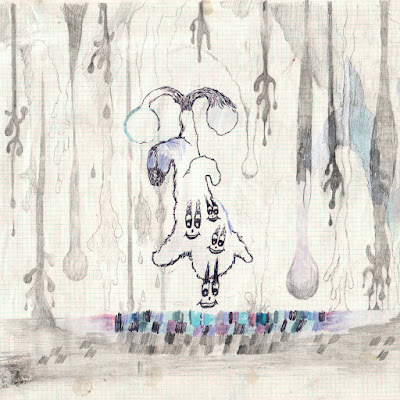Gudmundur Steinn Gunnarsson: Stífluhringurinn; Caput Ensemble; Carrier Records
Reviewed 18 June 2024
Music like no other. The Icelandic composer returns with a long, single work for large ensemble that mines his fondness for contemplating timbres and rhythms, and for music that avoids conventional straight lines and grids, yet creates pure magic
The Icelandic composer Gudmundur Steinn Gunnarsson is one of those artists whose work retains an entrancing unpredictability to it. Having review one disc, you can never be quite sure what the next one will contain. His latest disc, Stífluhringurinn consists of a single, long two-movement work performed by the Caput Ensemble who first performed the work back in 2019.
It is his fourth recording on the Carrier Records label.
Steinn Gunnarsson describes the work as being inspired by a suburban path and landmark in Reykjavík that connects the two neighbourhoods where he grew up. The piece is dedicated to two priests who serve in each of these neighbourhoods. One is a Lutheran minister of Japanese descent who has worked extensively with refugees and regular immigrants for decades, regardless of their background or religion. The other is a Zen priest of Icelandic descent who has spent a lot of time in training monasteries in Japan and America.
The work begins as sparse, notes in space that gradually coalesce, but there is always space. Steinn Gunnarsson talks about being interested in the idea of having four sound categories, short pitchless, short pitched, long pitched and glissando, and constructing music where each of these comes to the fore then retreats. There are pitched and unpitched notes, but it is sound-quality and timbre of the notes rather than the actual pitches themselves that matter. There is no conventional harmony, hardly any chords, just things happening, sometimes together and sometimes not.
One idea that those of us wedded to conventional notation have a hard time getting our head around is that Stein Gunnarson is not interested in music based around grids or straight lines, and often his music is notated using screen based scores and animated notation (or related digital methods) to express his inability to adapt to the convenient society. The results can at times sound freely improvised, when in fact the composer has a great deal of control.
There is something meditative about this music. By that, I do not mean that it is amorphous whale-music, but that each movement takes time (the first movement is 19 minutes long, the second 14 minutes) to explore its chosen area, circling around and approaching from different direction. This isn’t music that goes anywhere, it is exploring its chosen space.
The work is performed by the Caput Ensemble – Tenor and Bass Recorder + Found Objects: Þórunn Björnsdóttir, Flute and Alto Flute + Found Objects: Steinunn Vala Pálsdóttir, Clarinet + Found Objects: Guðni Franzson, French Horn: Bergrún Snæbjörnsdóttir, Trumpet: Eiríkur Orri Ólafsson, Trombone: Ingi Garðar Erlendsson, Harpsichord and Harmonica: Guðrún Óskarsdóttir, Steel-string Guitar, Banjo and Harmonica: Óskar Magnússon, 12-string Guitar, Mandolin and Harmonica: Guðmundur Steinn Gunnarsson, Percussion: Steef van Oosterhout, Violin: Hildigunnur Haraldsdóttir, Viola: Herdís Anna Jónsdóttir, Violoncello: Sigurður Halldórsson.
Yet the music never feels like there are lots of people involved, there is sparseness even to the most intense moments. Again, it is worth exploring the composer’s website because he explains, “The piece was written for the Caput Ensemble who premiered it in 2019. Covid derailed all plans for a group recording. Due to social distancing rules, the decision was made to record the piece in smaller groups. This resulted in a more granular recording, allowing the composer the freedom to rework the piece in the studio afterwards. The goal of the recording was not to produce an exact representation but to allow for a kind of free play that could bring certain subtleties to the front that would easily be lost in the concert hall. After the composer’s initial editing and effecting, the Norman Conquest mixed and mastered the album with added artistic touches.“
As with his other albums [I have reviewed Landvættirnar fjórar and Sinfonia], you have to put aside preconceptions and immerse yourself in a sound world containing music like no other.
Guðmundur Steinn Gunnarsson – Stífluhringurinn
Caput Ensemble
Recorded by Albert Finnbogason at Víðistaðakirkja February 2022
Carrier Records
The recording is available in a wide variety of formats from BandCamp.









